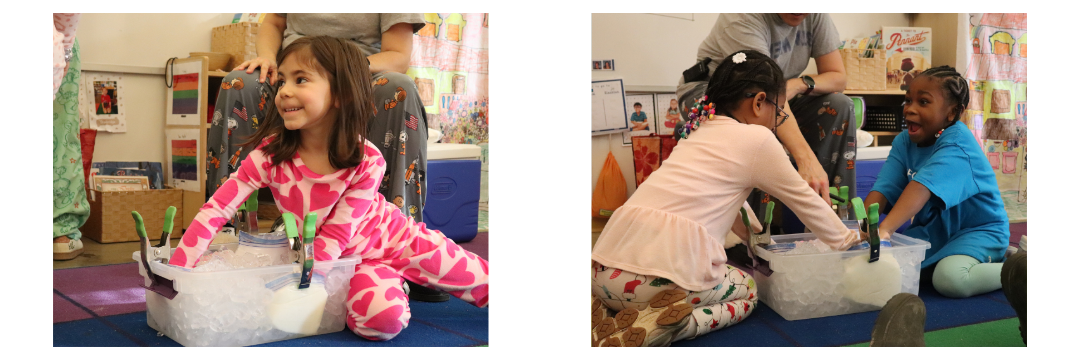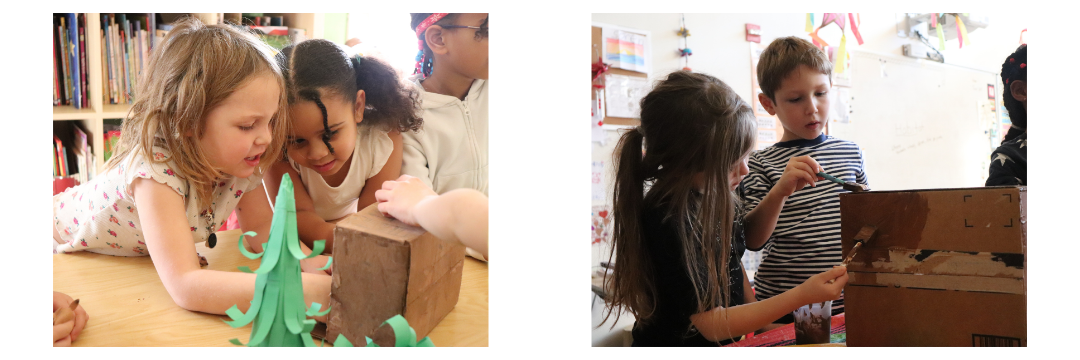Winter Animal Adaptations in Kindergarten Science with Whitney Byrd
Over the past few months, Kindergarteners have been learning all about the winter adaptations of animals in our area. They focused primarily on migration, hibernation (and torpor), and physical and behavioral adaptations. Through stories, discussion, and many hands-on activities, the Kindergarteners explored how several different animals of our region adjust to the conditions of the season in order to survive.
To begin the unit, the Kindergarteners reflected on what winter is like in our region–especially as they began to feel the cold themselves! Whitney Byrd, Kindergarten Science Teacher/Assistant Lower School Teacher, used the concept of layering clothing to highlight how humans adapt to colder weather, then challenged her students to consider how animals might have to change to adapt to this much harsher season.
Over the next few weeks, the kindergarteners learned about different survival techniques animals use to cope with winter. They learned that some butterflies and birds, such as geese, migrate to warmer locations to avoid the harsh, cold conditions. They also explored the different forms of hibernation, and studied how some animals enter a state of torpor—a lighter, less extreme form of hibernation. The kindergarteners also learned how animals that do not migrate or hibernate must adapt to survive, physically and/or behaviorally. They discovered that many mammals grow thicker coats in the winter for insulation, while other animals prepare by stocking up on food, or gaining extra body fat that, in addition to insulation, can be used as a back-up food supply for months if the animal is hibernating or unable to find food.

To help solidify the concept of how fur and fat insulate the body, Whitney conducted an experiment with the class. She insulated three plastic bags—one filled with cotton balls, one with bubble wrap, and one with Crisco vegetable shortening. Inside each, she placed another plastic bag to create a barrier. Then, she filled a large bucket of ice to simulate a cold, winter day and placed all three bags inside. The students took turns placing their hands in each bag to determine which felt the warmest, and therefore the best insulator. The winning choice, with the most votes (and the correct answer), was Crisco!
To wrap up the unit, the Kindergarteners will use materials they collected from a walk in FCS’s neighboring woods to build models of the different habitats of animals who go into a state of hibernation/torpor, as well as those whose bodies and behaviors change to adapt to the weather and environment. This hands-on unit sparked a curiosity and appreciation for animals and nature, and fostered a greater understanding of the area they live in and the other animals that inhabit it!

To wrap up the unit, the Kindergarteners will use materials they collected from a walk in FCS’s neighboring woods to build models of the different habitats of animals who go into a state of hibernation/torpor, as well as those whose bodies and behaviors change to adapt to the weather and environment. This hands-on unit sparked a curiosity and appreciation for animals and nature, and fostered a greater understanding of the area they live in and the other animals that inhabit it!
© Friends Community School - All Rights Reserved.




